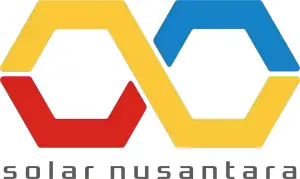Solar Power Plants
Solar power plants are not a new invention. They have been around for a while, but have only become more popular in recent years. The reason for this is that solar power plants have become more affordable and efficient. It is estimated that in 2020, solar power will become the cheapest form of energy in the world.
Solar energy is a renewable energy source that can be used to provide electricity. In the process, an additional tool called a solar panel is needed to convert sunlight into energy. A solar panel is a component of a solar power plant that converts sunlight into electricity. The solar panel consists of photovoltaic cells and is installed on the ground. These cells have a semiconductor material that is sensitive to sunlight and converts photons into electrons. The electrons then flow through an electric circuit that provides power to homes, buildings, and other electrical devices.
Solar panels are a type of photovoltaic panel that converts light energy from the sun into electricity. These panels can be found on roofs of homes and businesses, as well as on the ground. Solar energy is becoming an increasingly popular choice for many people who want to reduce their carbon footprint and have more control over their electricity bills. Solar energy is also a great way to create jobs in rural areas while reducing pollution in urban areas.
To meet the demand for solar energy, countries around the world are investing heavily in photovoltaic technology. In 2018, more than 2 million solar panels were installed around the world every day – enough to cover an area larger than New York City.
Solar panels work by absorbing sunlight and converting it into direct current (DC) electricity. The semiconductor material of a solar panel is made of a substance called silicon, which has a positive charge when exposed to light, while its base material consists of atoms that have a negative charge when exposed to light. DC current is then converted into alternating current (AC) power for use in homes or sent back to the grid. The conversion of DC voltage to AC voltage is done by an inverter. There are two types of inverters – single-phase and three-phase. A single-phase inverter has only one winding, while a three-phase inverter has three windings on the same centerline.
Benefits of Solar Power Plants
Solar power plants are a great way to generate energy without using fossil fuels. They have many benefits as well as some drawbacks. They are clean, renewable, and environmentally friendly. Solar panels do not emit carbon dioxide or other harmful emissions into the air like fossil fuels such as coal or oil.
The main disadvantage of solar power plants is the high cost of producing electricity from solar panels because there are many upfront costs involved in building them on roofs or fields. In addition, solar power plants require a lot of land, which is not always available in urban areas. The cost of installing solar panels is also high. However, with government incentives and tax credits, it has become more affordable for homeowners and business owners.
As we know, solar power plants are a sustainable and renewable energy source. They can be used in many ways, from powering homes to supplying electricity to the grid. Solar power plants are an excellent example of renewable energy.
They use sunlight to generate electricity and can be used in various ways. The most common use for solar power plants is to generate electricity. Solar panels are installed on roofs of homes or buildings and convert sunlight into electricity that can be used by the building or sold back to the power grid.
They use sunlight to generate electricity and can be used in various ways. The most common use for solar power plants is to generate electricity. Solar panels are installed on roofs of homes or buildings and convert sunlight into electricity that can be used by the building or sold back to the power grid.
Solar Power Plants
In conclusion, solar power has become an increasingly popular and important source of renewable energy in recent years, providing numerous benefits to both individuals and society as a whole. By harnessing the power of the sun, we can reduce our reliance on fossil fuels, decrease our carbon footprint, and create a more sustainable future for ourselves and future generations.
While there are still challenges to overcome in terms of affordability and accessibility, the advancements in technology and the growing awareness of the importance of sustainable energy sources are paving the way for a brighter and cleaner future.
Let us continue to support and invest in solar power and other forms of renewable energy, and work together towards a more sustainable and prosperous. world for all.
Let us continue to support and invest in solar power and other forms of renewable energy, and work together towards a more sustainable and prosperous. world for all.


